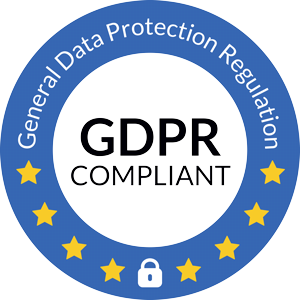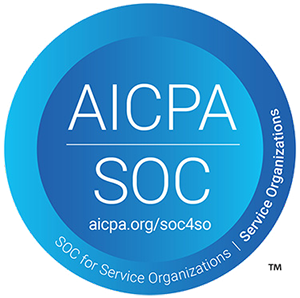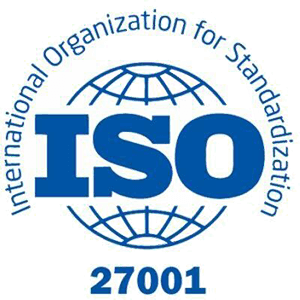Generative AI and large language models (LLMs) are rapidly transforming the nature of work. With 75% of knowledge workers already leveraging AI for greater efficiency and creativity, it’s clear these technologies are here to stay. Yet, 60% of organizations still lack a unified strategy for AI, even as experts estimate up to 40% of all working hours could be augmented by LLMs a profound shift in task execution, not outright job loss. In this landscape, Chief Learning Officers (CLOs) must champion enterprise-wide upskilling to equip both technical and non-technical employees for the future. The objective: move beyond basic awareness to foster broad proficiency and a culture of innovation around generative AI.
This strategy outlines major phases of an AI upskilling journey, key principles for organization-wide adoption, and best practices in change management, training, platforms, and stakeholder engagement. It draws on real-world examples from leading organizations to illustrate how an enterprise can build a culture of continuous learning around AI – a factor experts say is the biggest determinant of long-term success.
Guiding Vision and Principles
Before diving into phases, it’s important to establish a clear vision and guiding principles for AI upskilling. These will anchor the program and help align stakeholders:
-
Executive Commitment and Purpose: Position AI upskilling as a core strategic priority for the business, rather than a standalone learning and development initiative. Engage the CEO and senior leadership to champion the effort, clearly signaling its critical importance across the organization. Leadership must communicate the significance of AI for the organization’s long-term success and articulate how building AI capabilities among employees will create a sustainable competitive edge.
-
Culture of Curiosity and Growth Mindset: Cultivate a workplace culture anchored in curiosity, experimentation, and lifelong learning. Leaders should actively inspire employees at all levels—from executives to frontline staff—to embrace a beginner’s mindset, encouraging openness to new ideas and dispelling uncertainty. Emphasize that building AI proficiency is an ongoing journey, where exploring new tools and learning from setbacks are integral to progress.
-
Inclusivity – AI for All Roles: Make clear that generative AI skills are relevant to every function and level. The strategy must address a spectrum of needs: from introductory AI literacy for non-technical roles to advanced machine learning expertise for specialists. This ensures no group feels left out or left behind. LinkedIn’s five-level AI Upskilling Framework illustrates how all employees, whether project managers, marketers, assistants, engineers, or data scientists, require training at the appropriate depth. The first two levels are foundational knowledge for everyone, while higher levels cater to technical creators and experts.
-
Responsible and Ethical AI Use: Integrate ethics, governance, and safety at the foundation of your AI strategy. Set clear organizational standards for responsible AI use, data privacy, and security, and ensure these are consistently communicated alongside skills training. Many organizations, such as S&P Global, have established cross-functional AI governance councils—including leaders from IT, compliance, and legal—to shape policies and define best practices. This approach supports rapid, secure adoption of AI while effectively balancing innovation with risk management.
-
Business Alignment and Value Focus: Align AI learning with business outcomes. Focus training on use cases that improve productivity, quality, and customer experience. Set measurable goals, track impact, and evaluate learning based on job performance and real results—not just course completions.
With these principles in mind, the following phases chart a high-level journey from initial awareness to full adoption and continuous development of AI skills across the enterprise.
Phases of the Upskilling Journey
Phase 1: Awareness and Foundational Literacy – “AI 101” for Everyone
In this first phase, the goal is to build a broad base of understanding and enthusiasm for generative AI across the organization. Since the company currently has only basic awareness, start here:
-
AI Fundamentals for All: Roll out foundational education on what AI and LLMs are, how they work, and their potential uses and limitations. This could involve a mandatory e-learning module or interactive course for all employees. Cover core concepts (e.g. generative vs. traditional AI, capabilities of tools like ChatGPT) and emphasize that AI is a tool to augment their work, not a threat. Example: Kraft Heinz ran an “AI learning day” focusing on What is Generative AI?, how AI is used at the company, and What does AI mean for each of us? – giving employees a strong foundation tailored to their context.
-
Communicate Benefits and Use Cases: Demonstrate how AI enhances efficiency and creativity by providing role-specific examples, such as using AI to draft emails or generate ideas. Sharing real stories of employees who saved time with AI inspires confidence and openness, helping teams go from uncertainty to embracing AI’s potential. Success stories drive engagement and encourage a productive mindset shift.
-
Growth Mindset & Buy-In: Foster a welcoming environment where employees feel encouraged to ask questions and explore new ideas. Leaders should actively join training sessions, demonstrating a commitment to learning and growth. LinkedIn recommends leadership promote a beginner’s mindset among all staff, positioning AI as an opportunity for development. It’s essential to address concerns—such as job security or uncertainty about AI—through open discussions and Q&As, building trust and confidence throughout the organization.
-
Basic Tools Introduction: When enterprise-approved generative AI tools—like ChatGPT, Microsoft 365 Copilot, or others—are available, introduce them early in the program. Clearly communicate which tools are accessible and permitted, and offer straightforward demonstrations so employees understand how to use them. Take a cue from PwC, which provided its team with approved AI tools and established clear usage guidelines, empowering staff to experiment confidently and safely from the outset.
-
Policy and Ethical Guidelines: In addition to foundational AI education, clearly outline organizational policies—such as data security protocols, intellectual property requirements, and ethical standards for use. Work collaboratively with legal and IT teams to establish these guidelines. LinkedIn’s framework advises defining policy owners early and maintaining ongoing alignment, so employees understand expectations from the outset. Establishing these rules during the awareness stage helps prevent confusion and mitigates potential risks later on.
Phase 2: Hands-on Skill Development and Role-Based Application
Once a baseline literacy and positive mindset are established, the program shifts to practice and application. In Phase 2, employees begin developing practical skills to use AI in their day-to-day work, with training tailored to different roles or domains:
-
Interactive Training – Learn by Doing: Shift from theory to hands-on experience by offering workshops, live demonstrations, and interactive “AI labs” where employees can practice tasks like prompting LLMs or using AI-driven tools, all under expert guidance. Engaging formats such as PwC’s “prompting parties” create low-pressure environments for experimentation, questions, and peer learning. This practical, collaborative approach builds confidence and reinforces a culture of adoption, with a clear message: real proficiency comes through active, supported practice.
-
Blended Learning Modalities: Incorporate a variety of learning formats to meet diverse preferences and needs. Blend self-paced digital courses, instructor-led sessions, and peer-based learning opportunities. For example, PwC enhanced its foundational training with in-person seminars, gamified activities, bite-sized videos, and specialized tool workshops—tailoring content to each department. This blended strategy keeps the learning experience flexible and engaging, ensuring employees remain comfortable and motivated as they build new skills with emerging technologies. Short, just-in-time lessons delivered within the workflow help sustain ongoing momentum.
-
Role-Specific Learning Paths: As Phase 2 progresses, develop role-specific training paths tailored to each major business function—such as sales, marketing, finance, HR, and engineering. Ensure every team receives examples and exercises directly relevant to their daily work. Organizations achieve more meaningful adoption when learning is contextualized by department, as seen with LinkedIn Learning’s personalized “Applying GenAI” tracks for creative, business, and technical professionals. Coursera’s GenAI Academy follows a similar approach with dedicated pillars for different audiences, ensuring each group receives training aligned with their unique business needs. Customizing learning in this way answers the question, “Why does GenAI matter to me?” and helps drive engagement and motivation for every role.
-
Safe Sandbox and Tools Access: Establish a secure environment where employees can safely experiment with AI tools in real work scenarios. This might include an internal sandbox for LLMs, ensuring sensitive data remains protected. Coursera implemented such a sandbox in their GenAI Academy, allowing staff to explore various workflows without risk. Similarly, PwC’s “playground” concept enabled employees to test AI solutions, promoting safe exploration and innovation within defined boundaries. These dedicated spaces encourage creative problem-solving and help foster a culture of experimentation and continuous learning.
-
Examples and Cross-Pollination: Highlight and celebrate internal success stories as teams experiment with AI solutions. Share these early wins across the organization to encourage broader engagement and cross-team learning. LinkedIn recommends capturing examples of how employees are applying AI and promoting these stories to spark new ideas company-wide. Establishing forums—such as an “AI win of the week” segment at town halls or on the intranet—provides employees a platform to showcase how AI solves real challenges. Initiatives like Coursera’s internal recognition of AI course completions motivate peers and reinforce a culture of innovation and shared achievement.
-
Mentors and AI Champions: Identify early adopters or power users in each department and empower them to act as “AI champions” to help their colleagues. Peer learning is powerful at this stage. PwC scaled social learning by training “superstar” users who facilitated team workshops and coaching sessions. In their case, within months over 500 such peer-led workshops had been completed, helping employees directly learn AI applications in their domain from a colleague’s experience. Establishing a cross-functional network of AI champions or an internal AI community of practice can sustain knowledge sharing and support beyond formal training sessions.
By the end of Phase 2, employees across both technical and non-technical roles should be not only aware of AI but actively developing skills by using AI tools in realistic scenarios. They should feel “empowered and engaged” in the learning journey (as PwC’s CLO put itl), having seen examples of AI’s value in their work and gotten a chance to practice with guidance.
Phase 3: Advanced Proficiency and Innovation – “Deep Dive” for Technical Roles and Continuous Upskilling
Phase 3 recognizes that different roles will plateau at different skill levels. While Phase 2 lifts the general workforce to an applied competency, Phase 3 focuses on deepening expertise for those who need it and driving innovative uses of AI within the organization:
-
Tiered Advanced Curriculum: Deliver advanced AI education specifically for technical experts—including software developers, data engineers, data scientists, machine learning specialists, and related roles responsible for designing and sustaining AI capabilities. As outlined in LinkedIn’s upskilling framework, the upper tiers are tailored to increasingly specialized needs: power users, AI developers, model engineers, and R&D. Training should cover areas such as AI APIs, custom LLM development, model tuning, neural networks, cloud AI services, and MLOps, with targeted curricula for each group. PwC’s approach, for instance, built on broad foundational training by launching intermediate and advanced learning paths for technologists and “GenAI super users,” emphasizing hands-on projects with tools like Hugging Face, OpenAI APIs, and low-code GPT solutions. Enabling technical teams with this depth ensures the organization’s AI leadership and innovation, even amid fierce talent competition.
-
Pilot Projects and Innovation Sprints: Drive innovation by initiating pilot projects where cross-functional teams apply AI to real business challenges. Begin by selecting a few high-impact opportunities—particularly in areas like customer service, marketing, software development, or R&D, where AI can deliver significant ROI. Provide targeted training and empower these teams to design and implement AI-driven solutions, supported by leadership and the necessary resources. This hands-on approach delivers actionable results, builds momentum, and increases organizational confidence in AI. As the LinkedIn/Microsoft Work Trend Index suggests, focus initial upskilling efforts on the most ROI-driven functions, promote early wins, and use those successes to build enthusiasm and expand adoption across the company.
-
Internal Innovation Hubs or Hackathons: Empower advanced talent to lead innovation by establishing dedicated spaces or programs, such as an AI Center of Excellence or innovation hub, where experts explore new AI technologies and mentor peers. S&P Global, for example, formed a team of AI specialists from across the business to implement use cases and share best practices. Organize hackathons or company-wide challenges to encourage employees to prototype and share AI-driven ideas. These initiatives channel employee expertise toward scalable solutions and visibly reinforce the organization’s commitment to driving AI innovation.
-
Continuous Learning & External Partnerships: Ensure ongoing AI skill development by offering continuous learning opportunities beyond initial training. Support technical staff in pursuing industry certifications, attending relevant conferences, and enrolling in specialized courses. Build partnerships with universities, online platforms, and professional associations to keep content current and tailored to business needs, as S&P Global did with Accenture. Tap into external expertise to accelerate curriculum updates, and encourage knowledge sharing through internal initiatives like regular tech talks and dedicated AI forums. Make advanced upskilling a steady process ideally with monthly or quarterly refreshers—to keep pace with fast-evolving technology, especially for highly specialized teams whose skills may need near-constant updates.
-
Talent and Hiring Strategy: For Phase 3, partner with HR and IT leadership to build a robust AI talent pipeline. Prioritize reskilling and upskilling existing employees into AI roles, such as data scientists or ML engineers, while selectively recruiting new specialists to fill strategic gaps. PwC’s example—actively recruiting employees from across business units to form an internal team of AI technologists—demonstrates the effectiveness of blending internal development with targeted hiring. This integrated approach ensures a sustainable mix of skills and experience to support long-term AI initiatives across the organization.
By the end of Phase 3, the enterprise should have a growing cadre of AI-proficient professionals who can build and maintain AI solutions, and a track record of pilot successes that demonstrate AI’s business value. Equally important, a system for continual learning and innovation around AI should be in place, preventing skill stagnation.
Phase 4: Integration, Change Management, and Continuous Improvement – “Business-as-Usual” and Beyond
The final phase is about embedding AI skills and an agile learning culture into the fabric of the organization, and managing the transformation so that the change sticks. In reality, this phase runs in parallel with the others as a guiding thread: it encompasses the change management, adoption practices, and platform choices that enable the upskilling effort to succeed enterprise-wide. Key components:
-
Change Management & Communication: Treat AI upskilling as a transformative organizational initiative and implement a comprehensive change management strategy. Clearly articulate and regularly communicate the vision and value of the program—highlighting both the "why" and the "what"—across multiple channels, including CEO-led all-hands, town halls, email updates, and internal social platforms. Interactive, creative campaigns (such as AI-themed challenges or internal communications tools) can build anticipation and engagement. Formal tactics, like providing managers with prepared leadership talking points and regular leadership endorsements, ensure alignment across all teams. Consistent and visible leadership support is critical for driving participation and fostering a culture of continuous learning and enthusiasm around AI.
-
Leadership and Manager Involvement: Mobilize leaders at every level to serve as visible advocates and active participants in AI upskilling. Beyond executive sponsorship, ensure that line managers are engaged—encouraging their teams to prioritize learning, embrace experimentation, and celebrate progress. S&P Global’s approach blended executive-led and grassroots engagement by including over 200 senior leaders in targeted GenAI programs focused on business impact and technology fundamentals, signaling a shared commitment to growth. Managers can reinforce this culture by dedicating regular time to training, aligning upskilling with team objectives, and publicly recognizing innovative use of AI. Broad shared ownership and enthusiastic leadership involvement are critical to building trust, accelerating adoption, and embedding continuous learning organization-wide.
-
Learning Platforms and Tools: IInvest in a robust learning ecosystem to power and monitor your upskilling program. Deploy an enterprise-grade Learning Management System (LMS) or learning experience platform that hosts curated AI training—incorporating both internally developed resources and top-tier content from providers such as Coursera, LinkedIn Learning, or Udemy. Many organizations now establish internal “AI Academies,” such as Coursera’s Generative AI Academy or LinkedIn’s curated AI course paths, to address various proficiency levels. Prioritize platforms that support multimedia content, hands-on exercises, and integration with AI tools for immersive experiences. Set up dashboards to track enrollments, course completions, and learning time, enabling leadership to monitor adoption and identify focus areas. For example, Coursera’s pilot achieved an 83% course completion rate in its first quarter by tracking key metrics and sharing these insights with stakeholders—demonstrating measurable progress and pinpointing where to provide additional support.
-
Continuous Improvement Cycle: Continuously improve the learning program by actively seeking feedback and making regular adjustments. Use surveys, focus groups, and learning analytics to identify what’s effective and where gaps remain. Adapt content and experiences to meet evolving employee needs, introducing more advanced or tailored modules as necessary. Keep the curriculum current by updating it frequently with the latest AI developments. Establish a recurring review process—such as quarterly strategy sessions with the AI governance council, IT, and business leaders—to refine the program. As emphasized by PwC’s CLO, the pace of AI innovation requires an agile learning approach, with frequent enhancements to keep training relevant and impactful.
-
Recognition and Incentives: Boost motivation and reinforce ongoing learning by recognizing employee progress and achievements. This can include digital badges or certificates integrated with profiles and platforms like LinkedIn, public acknowledgments for “AI champions” or early adopters in company communications, and incentives such as innovation contests or special project opportunities. For example, Coursera celebrated the first cohort to complete a GenAI course with public recognition, driving high engagement and inspiring others to participate. Celebrating accomplishments helps cultivate a positive learning culture and encourages broad participation in upskilling initiatives.
-
Sustainability and Talent Retention: Reinforce a culture of continuous learning by actively celebrating employee achievements and progress. Offer digital badges or certificates for course completion, and highlight accomplishments in internal communications or on platforms like LinkedIn. Recognize “AI champions” and early adopters through company-wide shoutouts, and provide additional incentives such as innovation contests or special project participation. For example, Coursera’s public recognition of their first group of GenAI graduates sparked high engagement and set a positive tone for ongoing development. Visible acknowledgment not only motivates learners, but also builds momentum and enthusiasm for upskilling across the organization.
Best Practices and Real-World Examples
To ensure the success of this enterprise upskilling initiative, the following best practices – distilled from both research and real-world examples – should guide execution:
-
Start with Both “Top-Down” and “Bottom-Up” Engagement: Secure visible executive sponsorship (as described, e.g. CEO participation) and grassroots enthusiasm. S&P Global found a combination of top-down (executives in AI training) and bottom-up (all employees in an upskilling sprint) most effective to “get everybody up to the level we need”. Leadership sets the tone, but inviting employees to be part of the process (through feedback, involvement in pilot projects, etc.) creates buy-in at all levels.
-
Promote Collaboration Between L&D, IT, and Business Units: Upskilling for AI is a team sport. The learning team should work closely with technical teams to understand the tools and data considerations, and with each business unit to tailor relevant content. Cross-functional councils or working groups can help steer the program. Coursera’s approach involved a cross-functional GenAI task force (“Project Genesis”) to identify high-impact projects and ensure the training aligned with actual business needs. Likewise, LinkedIn’s CLO highlights the need for collaboration between HR/L&D and department leaders to create structured, role-based learning pathways that both meet business goals and motivate employees. A partnered approach prevents the learning program from operating in a vacuum.
-
Lead by Example in L&D: The learning function itself should adopt AI to improve training delivery. Use generative AI tools to accelerate content development (for instance, auto-generating first drafts of training materials or quizzes), create realistic role-play scenarios or simulations for learners, and even provide AI-driven tutoring or Q&A support. As one CLO commentator suggests, AI can personalize and scale the L&D process – acting as virtual tutors or creating adaptive learning paths based on employee progress. CompTIA, for example, is prototyping GenAI to generate scenario-based exercises requiring critical thinking, thus moving beyond static multiple-choice content. Embracing these innovations can make the training more engaging and effective, while also signaling to employees that the company “walks the talk” in using advanced tools.
-
Address the “Training Awareness” Gap: Interestingly, studies show many employers and workers are not even aware of available AI training options. Don’t assume employees know how to upskill themselves – part of the CLO’s role is to market the learning opportunities internally. Make it easy for employees to find and enroll in the AI courses or resources on your chosen platform. Launch an internal communications campaign around the AI Academy or curriculum. Provide a one-stop portal for all AI learning resources, FAQs, community discussions, and support contacts. In other words, treat employees as customers of this upskilling program – reduce friction and “meet them where they are” to drive participation.
-
Monitor, Measure, and Iterate: Implement strong program governance with ongoing monitoring of both learning metrics and business impact metrics. Some useful measures include: training completion rates, active usage of AI tools in workflows (possibly measured via tool analytics or surveys), productivity indicators, quality improvements, etc. Link training data with business KPIs where possible – for example, track if teams with higher AI course completion see faster project deliveries or other improvements. Use these insights to continuously refine the program focus. Also, celebrate the metrics publicly when they show progress (e.g., “over 90% of our workforce has now completed AI baseline training” or “X hours saved this quarter through AI-assisted workflows”), as this reinforces the value of the initiative.
-
Benchmark and Learn from Others: Finally, keep an eye on what leading organizations are doing in AI upskilling. The landscape is evolving quickly, and there is no one-size-fits-all blueprint, but examples abound:
-
Deloitte’s $1.4B investment in workforce development (“Project 120”) explicitly prioritizes upskilling in areas like AI from day one of an employee’s tenure. Deloitte focuses on rapid deployment of learning (e.g. aiming to train tens of thousands of staff in new AI skills within 90 days) and measuring success by application on the job.
-
PwC’s $1B AI Upskilling Journey: PwC committed to upskill 75,000 employees with AI skills over 3 years. They learned to emphasize active learning (“My AI” program with integrated tools and practical experience) to make employees savvy, responsible AI users. PwC also differentiated training by levels, created an internal AI sandbox (“playground”) for experimentation, and leveraged social learning through peer-led workshops. Notably, within about a year of launching, 95% of PwC’s employees had engaged with generative AI in some capacity under this program – a testament to the comprehensive, engaging approach.
-
Coursera’s GenAI Academy: Coursera’s internal initiative stands out for its high adoption (83% of employees completed a GenAI course in the first quarter) and its multifaceted engagement tactics. Key elements included CEO-driven urgency, alignment with company culture, tailored learning paths for everyone vs. leaders vs. teams, a secure experimentation environment, defined learning goals with metrics, and creative communication and recognition efforts (leadership nudges, social campaigns, and rewards). This holistic approach – covering technology, people, and process – offers a useful model for other CLOs.
-
S&P Global’s AI Curriculum: S&P Global initiated an “upskilling sprint” for 35,000 employees with content tailored to each role’s needed expertise. They involved top executives, partnered with Accenture for content and platform support, and built in certifications/badges for motivation. They also set up strong governance (chief AI officer role, AI council, internal learning team called EssentialTech) to sustain the effort.
-
By learning from such examples and adhering to the principles and phases outlined above, a Chief Learning Officer can steer their organization through a successful transformation. The outcome of this strategy will be a workforce that is not only upskilled in using generative AI tools, but is also resilient, adaptable, and continuously learning – exactly the kind of workforce needed to thrive in the future of work.
Conclusion
Enterprise-wide AI upskilling is an ongoing process not a one-time event. Lasting success requires a long-term commitment to employee growth and continuous learning, backed by strong leadership and a structured, inclusive strategy. As employees progress from basic awareness to innovation, the organization will build a resilient culture, prepared to adapt and succeed. Companies that prioritize investing in AI capabilities now will gain a competitive edge through greater agility, innovation, and data-driven decision making.







Leave a Reply